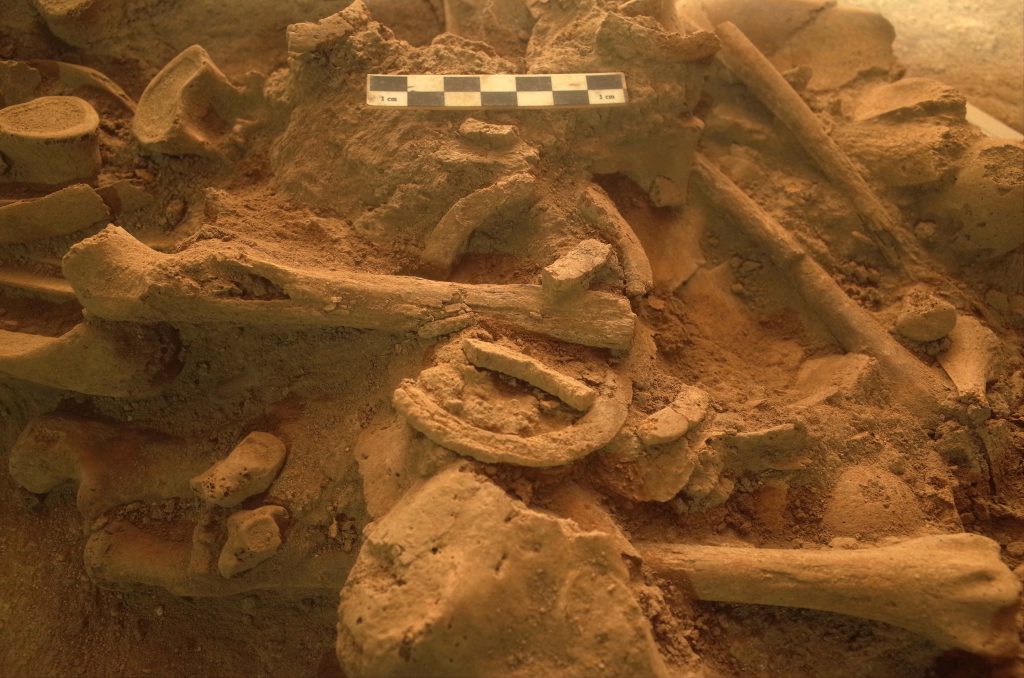These are challenging times – for everybody, for many groups more than others (just think of the heroes in hospitals, schools, kindergarten and supermarkets as well as many other places and the awful situation for everybody involved in gastronomy, tourism and culture). We as archaeologists are more or less well prepared for doing much of our work from home. Spending weeks and moths per year in the field, often stuck on an island somewhere, we are also used to a certain kind of isolation.
However, there are of course real problematic issues for us we are currently facing. First of all, of course going to the field in Sudan and Egypt – nothing that is possible at the moment and also planning our next season in the MUAFS concession is still extremely difficult because of the pandemic. Second, our teaching activities are restricted to online formats. Whereas this works without problems for lecture classes and seminars, our planned block seminar “Introduction to field archaeology” where we wanted to have various practical training for our participants would need to be completely revised as an online format. We have postponed it for now, hoping that it might be possible in March – I remain skeptical (or realistic?) since the extension of the lockdown in Munich is very likely, but let’s wait and see. Third, working at home and taking shifts in working in the office to secure isolation and limited risks for everybody is currently without alternative, but I miss having the complete team present and exchanging in a casual way.
Well – as archaeologists we are trained to be patient, and all will be better somewhen!
For now, I wanted to give a small update on our work progress. Everybody of the team is busy with several work tasks within the work packages – much efforts are currently spent by Giulia and Veronica on databases, by Jessica on enlarging our digital library and by Cajetan on various aspects of remote sensing. Rennan was busy with his PhD viva at Cambridge which he passed very successfully and now continues with collecting data useful to approach the mortuary archaeology of the MUAFS concession.
It was very silent from my side as PI and this with good reasons – it is the end of the teaching term, there’s a lot of administration keeping me busy and most importantly: I tried to finish a monograph about Tomb 26 on Sai Island in the last months. This process has taken quite some time and actually benefitted from the lockdown and that I was unable to leave Europe over the winter. This book is now almost ready and I could easy repeat what I had written in 2018 about the merits and flaws of preparing archaeological publications, especially about crazy working hours and panic attacks. And about the feeling of being overwhelmed when you know exactly that the really important things in life are neglected but you can’t help it – partner, family, friends and pets suffer and need to be very patient and supportive (or bribed in the case of animals). Friends and family got used to my slightly bizarre answers on the phone “yes, all is fine, I am still in my tomb, can we speak later?” and for this I am very grateful! Interestingly, there was not much difference between the last months in lockdown and the final book preparation period back in 2018. The results of isolation are just the same, with more silence in the office and maybe with the slight difference that I could not meet friends now, even if I could spare the time.
For the DiverseNile project, preparing the AcrossBorders publications is hugely relevant. There are so many aspects we will be able to compare with sites in our new concession which are after all located in the ‘periphery’ of Sai Island. Tomb 26 is one of the Egyptian style pyramid tombs on Sai where the local elite was buried. We had more than 36 burials in this monument and we are now able to reconstruct in detail the life history of the tomb and its users. Although the burial assemblages like the one of Khnummose follow Egyptian standards, there are also certain local markers and individual concepts which I describe in the forthcoming book. We assume that none of the users of Tomb 26 was actually coming from Egypt, all of them are belonging to the local elite with indigenous roots. Interestingly, we also have some Nubian features, especially traceable by the choice of ceramics and bodily adornment.
The probably best example is a young female who was buried with an ivory bracelet in Tomb 26 (Fig. 1). This bracelet was badly damaged and broken, but its find position over the ulna of the individual allowed a clear interpretation. Similar bracelets are known from several New Kingdom sites in Nubia (e.g. Buhen, Mirgissa and Fadrus) and can be regarded as typical ‘Nubian’.

Overall, Tomb 26 on Sai Island illustrates as a case study the potential of investigating the variability of funerary practices within a common repertoire of burial customs adopted from Egyptian standards as being rooted in distinct social practices. One of the main tasks for the near future within the framework of the DiverseNile project is, therefore, to determine the degree of diversity not only in elite contexts such as the pyramid cemetery on Sai but also in social groups not belonging to the elite of New Kingdom Nubia in order to achieve a more comprehensive picture of past communities in the Middle Nile region. Our cemeteries in the Attab to Ferka region will allow us to make here considerable progress in the next years, especially because of our joint approach using both funerary and settlement records to reconstruct past communities.
